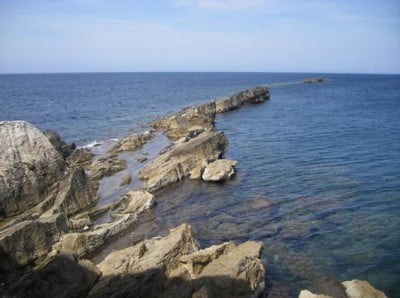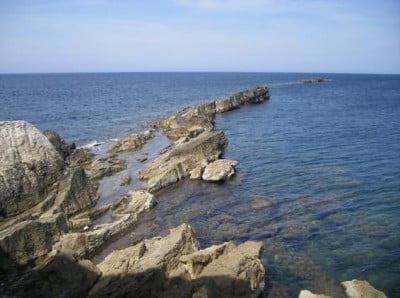After trip to sicily from one of our travelers, we bring you this Trapani guide which is part of the complete guide to Sicily. We hope it will be of great help in your next trips to this wonderful island.
Trapani it is worth visiting… and must be seen, at least for two days. Stroll through its cobbled streets and stop in the old shops where they sell their artistic corals, following the traditional method. Also, acquire goldsmith products, clearly Spanish influence.
In the photo, the extreme tip of the city; between two seas, the Tyrrhenian and the Mediterranean, through which Greeks, Arabs, Normans and Spaniards passed, each one leaving their contribution, their influence... Here, a mixture of Romanesque, Baroque, Liberty is conjugated... which materializes in its stately palaces, the facades of its churches and any other building in its old town. Another vestige of the Spanish presence: The Good Friday processions, very similar to those of any city in Spain.
Trapani has earned much of its income from fishing (especially tuna) and coral mining. The pieces made with coral from Trapani and San Vito lo Capo, were sold with great success around the world (until the coral reefs were almost completely depleted), also from the export of salt (see photo of the salt pans) and of wine production. It is even claimed that a lot of Mafia money was laundered in Trapani. (I don't remember who told me this)
In Palermo, we will see more materialization of the Spanish presence. Here in Trapani, the Torre de Ligny, built by the Spanish to stop the incursions of the Turkish pirates, is worth noting. The Tower of Ligny is the one that appears in the following photograph.
The Tower of Ligny (XNUMXth century) contains the Museum of the Sea and Prehistory with archaeological pieces from the area and medieval objects of all kinds, taken from the ships that sank or ran aground in its proximity. Highlighting: The San Francisco with Stigmata by Titian and La Piedad by Oderiso.
Currently, due to construction, it cannot be visited.
Let's say that we are in the final part, in the sharpest part of the sickle that forms this piece of land that goes into the sea. Therefore, the Romans called it Drepanum (The Sickle).
other monuments
It is a XNUMXth century tower; in the following photo, the upper part of the Tower.
Next to this tower is the Senate Palace, which appears in the photograph on the next page.
On the ground floor, an exhibition was taking place, advertised with the poster below.

In this Palace, is the Town Hall of Trapani
If we look at the photo, we can see its magnificent baroque facade. At the top and in the center the statue of the Madonna of Trapani, of great veneration. At her side, S. Giovanni and S. Alberto, patron of the city.
They are the walking paths for the inhabitants of Trapani, from this point to the Plaza del Pescado it is an ideal place to walk.
Recently rebuilt, trying to give it its former splendor, as a place for visitors to stroll and also house, within its walls, various temporary exhibitions of fine arts.
In its center, there is a very beautiful Venus (Photograph below)
Religious Spaces
Among its treasures: Van Dyck's Crucifixion.
Admission is free. It opens at 8,00 am, closes at 13,30 pm. In the afternoon it opens at 16,00:XNUMX p.m. and stays open until the masses are over.
Very interesting and worth observing, its stucco interior.
If you are interested in seeing more photos of the Cathedral you can visit this gallery.

It dates from the XNUMXth century and we must pay attention to its rose window, with crossed recessed arches. It houses temporary exhibitions. Specifically, on the dates of our visit: The genius of Leonardo da Vinci (we will talk about it later).
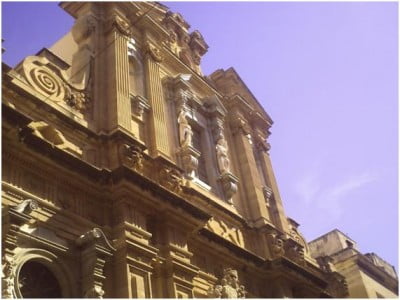
Let's take a look at its impressive baroque façade. In the following photograph, detail of the interior of the Church. Specifically, her Pulpit:
Museums and art spaces
In the photograph, a bicycle that gave the sensation of manageable.
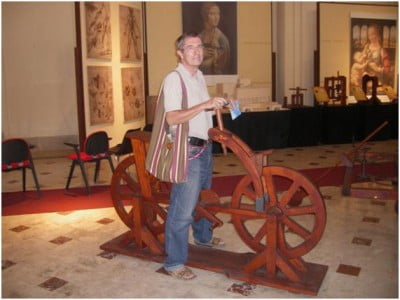
Next, the diver model that the genius of Leonardo devised
As we already said in the Church of San Agustín, it houses the exhibition on the Genius of Leonardo da Vinci. If you wish, you can see more photos of the museum in this gallery.
Natural landscapes

Its waters are crystal clear and you can take your bath very close to some lazy seagulls.
Another photograph where the transparency of its waters can be appreciated.
In the previous photograph, we can see where the sickle narrows and if we walked in the direction of the buildings that appear in the background in the photograph, along the beach, we would reach the Ligny Tower and the sharpest part of the “sickle ”.
On the way to Birgi Airport, the closest to the city of Trapani, are its salt flats and its historic mill (in the next photo). We have already said that together with fishing, coral and some other source of money, they were the source of income for the area.
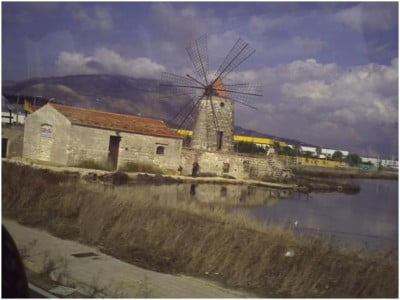
The salt extracted and piled up, prepared for dispatch to the consumption areas (in the following photograph)

How to get there… and how to get around
We made the flight from Valencia in Ryanair (there are also flights from Barcelona) to Birgi airport, the closest to Trapani.
From Birgi Airport to the city of Trapani there is a bus service of the teravision company, departing for the center of Trapani (including the historic center), once the Ryanair plane has arrived.
Through the city, there is an urban bus service, the number 11 should be highlighted, which runs through the monumental part of the city. They told us it was free (but we couldn't confirm it).
interurban
. Self-service Lumia: Trapani – Agrigento.
. Self-service Segesta: Trapani – Palermo and Trapani – Roma.
Trapani - Palermo line. (I took the train to Palermo. See how to get there. Palermo).
. Tirreia Line: Trapani - Cagliari and Trapani - Tunisia.
. Conatir Line: Trapani – Livorno.
. Kangaroo Line: Trapani – Civitavecchia.
. Line siremar, bound for several small tourist islands
. Ustica Line: I moved to Ustica by hydrofoil. See: How to get there. Ustica.
Accommodations (Where to sleep)
There is a limited number of establishments to accommodate visitors and almost all in the historic center.

In the photo, the entrance courtyard to Albergo Messina, in the old and touristic part of the city. It shares a ticket with the Ai Lumi, although they are two different hotel establishments, the Messina being the cheapest price.
It is easy to ask on the street, in the places where you eat breakfast or eat, for places to sleep. In addition to the two mentioned, they recommended the Hotel Victoria, commenting that the value for money is good and that I would rest well.
And finally, the private houses, which rent rooms, the “affitacamere” (of all kinds and with different packaging.) That you can find as soon as you ask and are interested. And the hostels, cheap and usually in shared rooms and with which it is very easy to find and book online.
Tour
The tourist information point is located in Via Garibaldi. In a more than correct Castilian they attended me. (The truth is that you could see quite a lot of Spanish in the city). What was my area of interest when visiting Trapani? They provided me with the following map, with the indication that I should go to the Historic Center, towards the Cathedral and the area of the port where the boats left...
How to visit the city? Starting from the Hotel Victoria, on Via Francesco Crispi, reaching Via Garibaldi – Liberta, to then reach Via Corso Vittorio Emanuele, leaving the sea on your right as you walk, until you reach the Torre de Ligny (the “Torre de Ligny”). tip of the sickle, as we said at the beginning), perceiving at all times the salinity of the sea that permeates the environment, reaching its streets, its cobbled alleys and each and every corner of the historic center.
Tours and opinion
In the photo, a Fiat 500, a model that I frequently saw in its streets and squares. It inevitably made me turn my head. Obviously smaller than our Seat 600, which in its day was very popular on our roads. And you see their cars, you sit on a terrace, in a busy square and you see how the city passes in front of you. And you walk along Vía GB Fardella and from a cafe you could listen to Spanish music, the manager of the place who spends his summers in Fuengirola commenting to you and that he is in love with Spanish culture; Other clients talk about his stays in Spanish cities and places. Also, topics like soccer help you communicate with people: I'm from Inter, well, I'm from…
I arrived one day in the early afternoon! My first day there! You become more self-absorbed and try to keep up with its people. The conversation flows and as soon as you try, you make yourself understood. The people are open and communicative, ready to help you with your problems when visiting the city.
You get the map that appears above and with comfortable shoes, first thing the next morning, the second day of your trip to Sicily, you go for a walk around the city. Because: TRAPANI APPARE ALWAYS ALL'IMPRO VISO! Also, I did not feel, at any time, foreign.
Go to the complete guide to Sicily.
This article has been shared 47 times. We have spent many hours collecting this information. If you liked it, share it, please:
